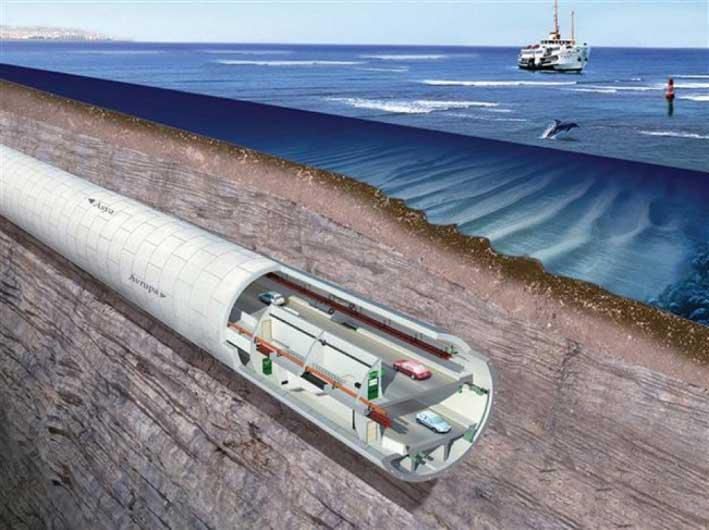Gozitan student Jonathan Mintoff said that only Gozitans can understand what “we go through each time we travel to Malta to study or work”, when asked whether he feels that those who are suggesting Gozo will lose its uniqueness in the event a permanent link is created are being selfish.
“No, I don’t think they are being selfish. But this is why we want to show others that being in our situation is no easy task and that Gozo has to keep up with the times.
“We simply cannot understand each other because we are not in the same situation, hence our awareness campaign,” he continued.
On 1 December, the pro Gozo tunnel movement, which is apolitical, was launched where a number of Gozitan youths kick-started their campaign to raise awareness on the “dire need” for a permanent link between the island of Gozo with Malta to make Gozo more accessible. Two Gozitan MPs, PL MP Franco Mercieca and PN MP Chris Said both declared that they will be supporting their cause although they do not form part of the movement.

Mr Mintoff said: “We launched our movement on 1 December, exactly 25 years after construction workers drilled through the final wall of rock to join the two halves of the Channel Tunnel to link Britain with France.”
During the momentous breakthrough, flags were exchanged by English and French construction workers as the two ends of the tunnel met.
For years, Gozitan students have had to bear the brunt of crossing with the ferry and losing ample time to travel to educational institutions in Malta. Not only, but students have to wake up very early in the morning to make it in time, and at times, end up stranded in Malta due to bad weather.
But why build the tunnel, it seems like a lot of trouble? Won’t Gozitan students and workers settle for a fast-ferry service?
Mr Mintoff pointed out that a fast-ferry service would be ideal as a short-term solution but if one were to look at the long-term, the most viable option would be constructing a tunnel, which would cost much less than the costs involved in the running of the Gozo Channel ferries.
The works on the tunnel are estimated to take as long as seven to 10 years.

“In 15 years’ time, the Gozo Channel would be forced to purchase new boats. The costs to do that would reach some €120 million, including an additional €21 million per annum in maintenance and fuel costs.
“The most viable long-term investment would be to build a tunnel, which would cost a total €300 million but the link would be permanent,” he explained.
But it is not simply the movement which is saying this but a report whose lead author is economist Gordon Cordina also found that a tunnel is feasible.
The report, commissioned by the Gozo Business Chamber and Transport Malta, is entitled ‘Establishing a Permanent Link between the Island of Gozo and Mainland Malta: An Economic Cost Benefit Analysis of Available Strategic Options’. The objective of the study is to estimate the economic and financial benefits and costs associated with the establishment of a permanent link between Gozo and Malta on the basis of available technical studies.
Three strategic scenarios were identified: Business as usual, where the current ferry service will be maintained, a bridge, or a tunnel sub seabed scenario. It is estimated that a bridge would cost some €800 million. The report identified the tunnel, which would cost €300 million, as the most feasible of options.
Mr Mintoff said that the movement was launched specifically to raise awareness among those who are not in their situation. “Gozitan families need to earn their bread and butter as well.

“If no permanent link is created, Gozo will continue to lose its youths who are seeking new pastures while it goes without saying that the number of Gozitan families will automatically decrease.
“Although initiatives have been introduced to alleviate the problem, more needs to be done,” he said, referring to business oriented incentives introduced by governments.
“We are speaking of 1,700 students spread across Malta’s educational institutions, 4,000 Gozitans who are working in Malta, and a number of Gozitan entrepreneurs depend on essential services from Malta,” he continued.
The Gozo University Group (GUG), which also forms part of the movement, also gave its take on the subject.
“Students and Maltese workers lose a total three to four hours a day to cross over to Malta and back,” Maria Dimech, GUG’s public relations officer, said.
Ms Dimech said that if one uses his private vehicle, he or she is more likely to spend less time travelling when compared to a person who has to use public transport.

She explained that a survey was conducted where 300 students were asked if they are in favour of a tunnel and a fast-ferry service. “Seventy-five per cent agreed with the tunnel while 85% also agreed with the fast-ferry service.
“What emerges from this survey is that something needs to be done. The fast-ferry service, coupled with the tunnel, would be ideal,” she suggested.
She further explained that GUG is suggesting that more research is done on the proposed tunnel, such as a geological study.
Asked whether this tunnel will dent all Eco Gozo’s efforts, the two argued that “we need to strike a balance between the environment and the needs of Gozitan families.
“Gozo is considered as an island that opens in May and closes in October. This cannot go on for much longer,” Mr Mintoff pointed out.
Mr Mintoff said that the average annual wage of Gozitans is €20,000 while the average salary of Maltese workers is €22,000.
He also explained that Gozo’s gross GDP is €13,000 while Malta’s is €19,000 per capita.
Mr Mintoff cited Norway as an example to show that tunnels are not something out of the ordinary. In fact worthy of note is the fact that the detailed report on the most feasible options turned to Norway as a source of data which has ample experience in producing well-managed tunnels at an affordable cost. Norway has some 40 subsea tunnels in operation or development, close to 30 years experience and the length of tunnels vary between two kilometres and 25 kilometres while the depth vary from 20 metres to 380 metres.
Interview Photos Michael Camilleri